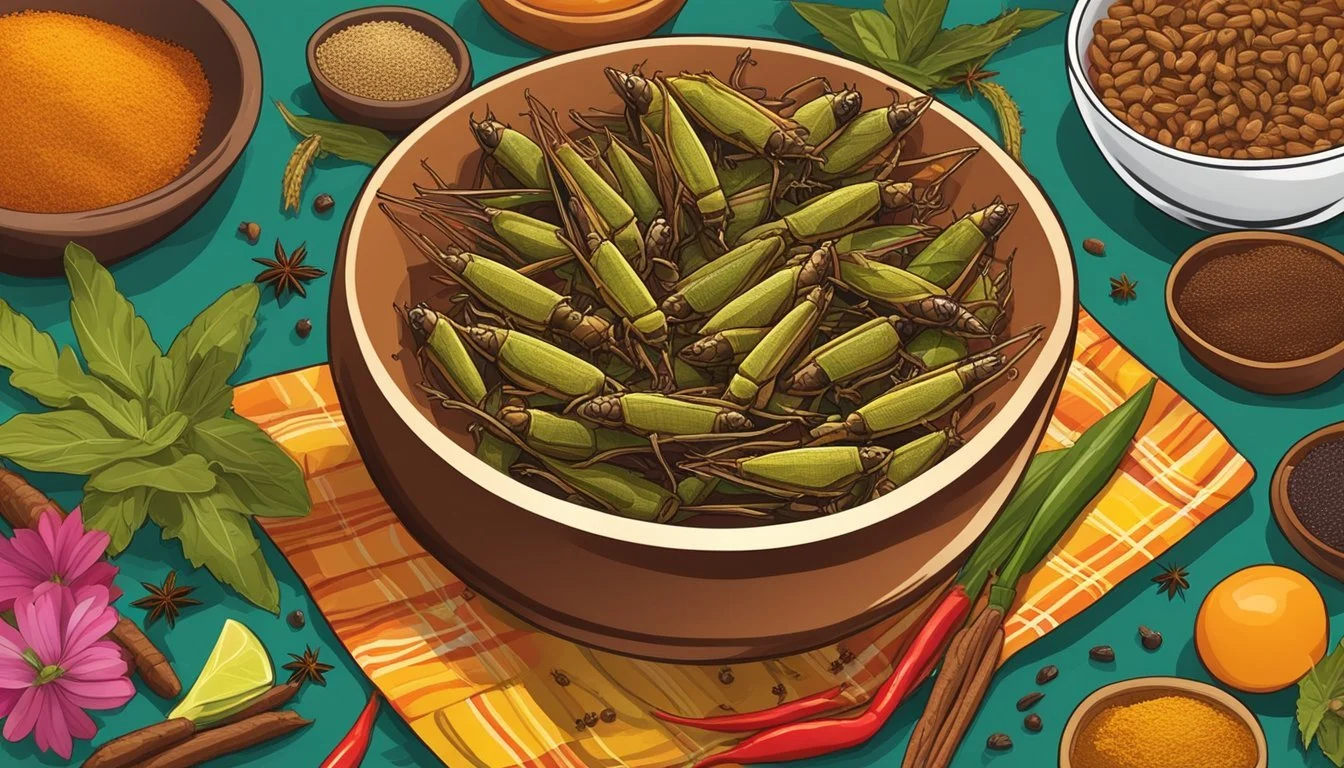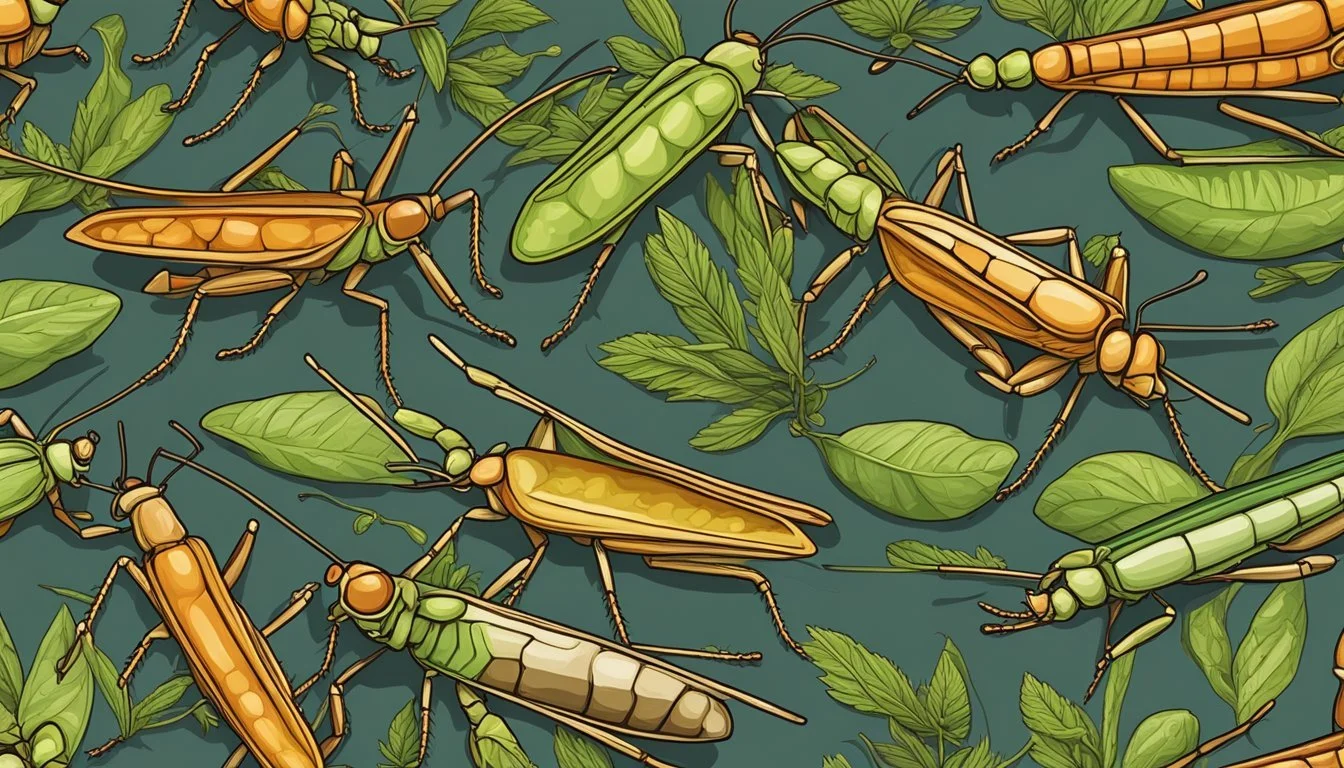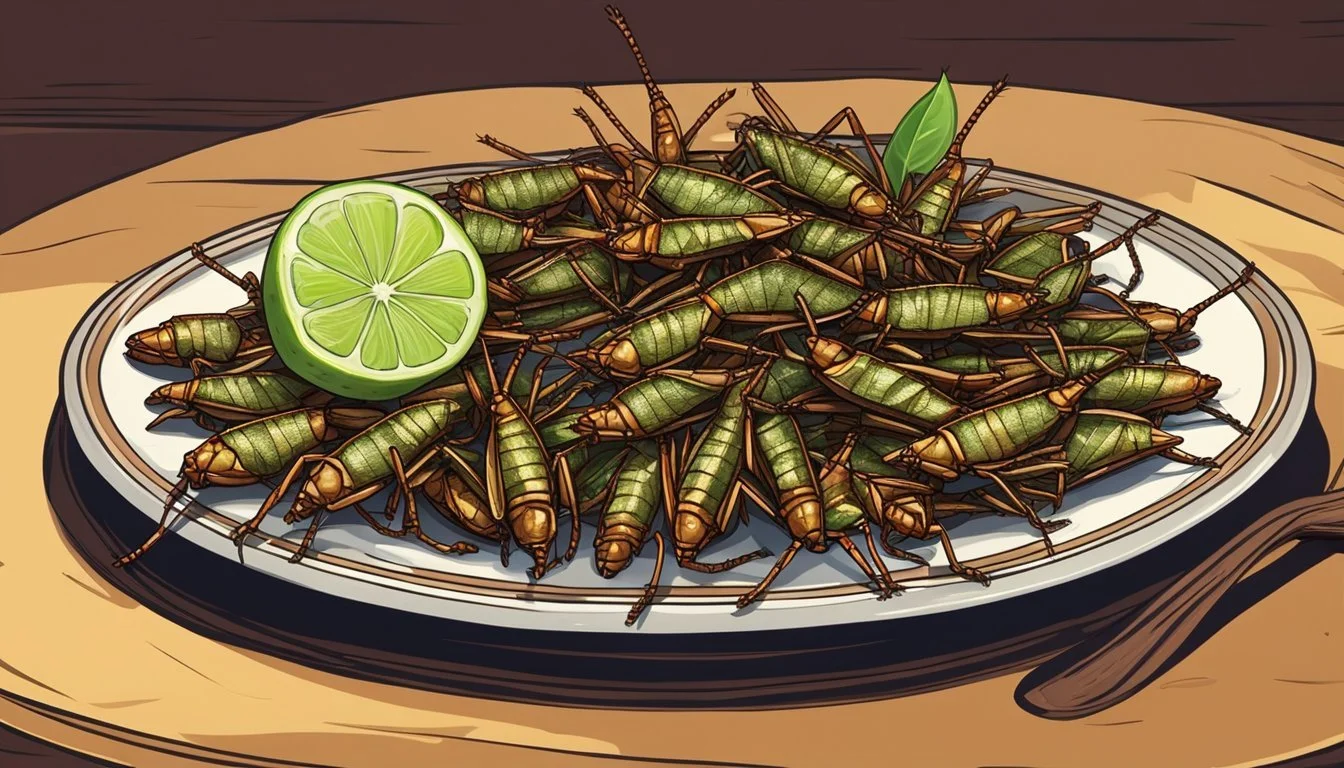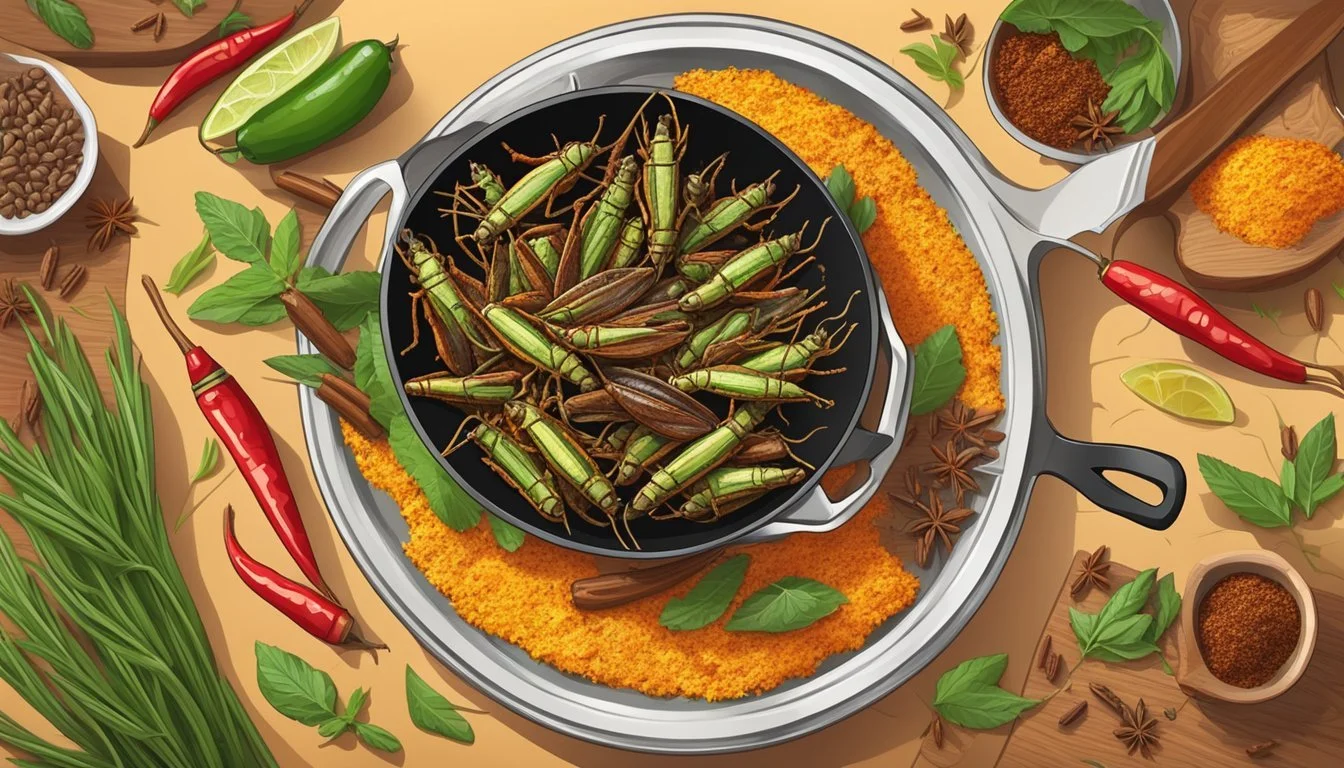Chapulines Unveiling the Taste of Mexico's Seasoned Grasshoppers
Chapulines are a traditional Mexican dish that dates back to pre-Hispanic times, reflecting the rich culinary heritage of the region. These seasoned and roasted grasshoppers are renowned for their distinctive yeasty flavor and satisfying crunch. A staple in Oaxacan cuisine, chapulines are typically seasoned with chili, garlic, and lime, fundamentally enhancing their taste. This delicacy can be savored alone as a snack, or used as a protein-rich filling for tacos, tostadas, and other local dishes, often accompanied by fresh salsa, onions, cheese, and guacamole to complement their nutty taste.
The preparation of chapulines is meticulous, beginning with the removal of wings and legs, followed by a thorough cleansing process. They are then dried and roasted to achieve the ideal texture. Integral to their preparation is the art of seasoning—the fusion of local spices and flavors that make chapulines a beloved snack among locals and a growing curiosity for food enthusiasts worldwide. Rich in protein and environmentally sustainable, chapulines offer an alternative nutritional profile, making them a forward-thinking option in the context of global food sources.
Historical Significance and Origin
Chapulines—roasted grasshoppers—are a traditional Mexican food (What wine goes well with Mexican food?) with deep-rooted historical significance, particularly in Oaxaca, a region renowned for its rich culinary traditions.
Origin in Oaxaca
The tradition of consuming chapulines in Mexico can be traced back to the pre-Hispanic era, especially in the valley of Oaxaca. For centuries, the indigenous peoples have harvested chapulines as a readily available source of protein. The Nahuatl word chapōlin, meaning "grasshopper", highlights the linguistic legacy alongside the entomophagy practice. The seasonality of chapulines converges with the agricultural cycles, typically found in abundance during the rainy season from June to October.
Cultural Importance
Chapulines are much more than just a food item; they represent a vital element of Oaxacan hospitality and are often shared during special occasions. They are considered a delicacy and are used to honor guests, reflecting the spirit of generosity inherent in local customs. Integral to local markets and family kitchens, they are usually seasoned and toasted, becoming a culinary staple. Chapulines embody Oaxaca's connection to its natural environment and ancestral roots, maintaining an essential place at the heart of regional events and everyday diets.
Nutritional Value
Chapulines, or grasshoppers, are not only a unique culinary offering from Mexico but also a rich source of nutrition, offering high protein content with a lower fat ratio compared to traditional meats.
Protein Content
Chapulines are an excellent source of protein, which is vital for muscle repair, growth, and overall bodily functions. They provide a high protein content relative to their size, making them a sustainable alternative to conventional animal protein sources.
Vitamins and Minerals
In addition to protein, chapulines contain a variety of essential vitamins and minerals. These include iron, which is crucial for blood production, and zinc, important for immune function. Chapulines are also a source of fiber, which aids in digestion. Here is a brief overview of the key nutrients found in chapulines:
Iron: Essential for hemoglobin formation in red blood cells.
Zinc: Supports immune system health and wound healing.
Fiber: Improves digestive health and can aid in weight management.
By incorporating chapulines into the diet, one can benefit from these nutritional components in a unique and culturally rich form.
Culinary Practices
The culinary tradition of chapulines centers on their preparation, integration into dishes, and innovative uses. These grasshoppers are transformed from a simple insect to a savory delicacy through meticulous cooking techniques and thoughtful seasoning.
Preparation Techniques
Chapulines are primarily cooked by toasting or frying to achieve a crunchy texture. The frying process usually involves removing their wings and legs before frying them in oil until they reach the desired crispness. Seasonings such as salt, garlic, lime juice, and various kinds of chili give them a distinctive, savory flavor profile. The precise combination of these ingredients ensures that the chapulines’ natural blandness is complemented by aromatic and tangy notes.
Common seasonings:
Salt
Garlic
Chile
Lime or lime juice
Traditional Dishes
In traditional Mexican cuisine, chapulines are often used as a filling for tacos or served atop tlayudas, a type of Oaxacan street food resembling a large, crispy tortilla. They might be paired with corn tortillas, fresh salsa, and guacamole to cut through the insect's yeasty flavor, resulting in a dish that is both traditional and flavorful. Consumed with mezcal or used as a topping for carne asada, they are considered not just a snack but also a cherished part of the local gastronomy.
Dishes featuring chapulines:
Tacos with chapulines and green salsa
Tlayudas topped with crispy chapulines
Modern Culinary Innovations
Chefs have begun to explore new ways to incorporate chapulines into contemporary dishes, recognizing their sustainable qualities and unique taste. Integrating these insects into modern cuisine offers a fusion of traditional and avant-garde eating experiences, crafting innovative dishes such as chapuline-infused sauces or incorporating them into gourmet dishes that highlight their crispy texture and nutty flavor. This culinary innovation continues to elevate chapulines from a traditional delicacy to a modern culinary trend.
Innovative uses:
Sauces infused with chapuline flavor
Gourmet dishes featuring chapulines as key ingredients
Culinary Usage
Chapulines are a versatile ingredient in Mexican cuisine, served in various ways from casual street food to sophisticated restaurant dishes, and are even prepared at home.
Street Food
They often feature as a protein-rich snack sold in markets and street stalls, particularly in Oaxaca City and Mexico City. Vendors typically offer chapulines seasoned with chili, garlic, salt, and lime, serving them in small bags for easy consumption on the go. In Mexico, tacos with chapulines are a common street food item. The seasoned grasshoppers add a crunchy texture and a spicy kick to the soft tortilla and are usually complemented with fresh salsa and onions.
Restaurant Dishes
In restaurants, chapulines are incorporated into a variety of dishes, gaining popularity beyond Mexican borders in cities like Los Angeles and Seattle. Diners can find them topping tlayudas, a traditional Oaxacan dish akin to a large tortilla pizza, or as a unique taco filling. Upscale eateries might also present chapulines as a gourmet appetizer, toasted and spiced to perfection.
Home Cooking
Home chefs in Mexico incorporate chapulines into their cooking, using them as a flavorful addition to guacamole, salsas, or as a filling for quesadillas. Preparation at home involves cleaning the grasshoppers, often followed by toasting them in a pan with select spices and seasonings, and then adding them to various dishes to enhance the meal with their distinctive yeasty and tangy flavor.
International Perspective
Chapulines have become a gastronomic highlight that extends beyond Mexican borders, showcasing the practice of entomophagy and influencing global variations.
Global Variations
Thailand and Uganda are among countries where the consumption of insects is culturally ingrained, similar to Mexico’s tradition of chapulines. In Thailand, a variety of insects including water beetles and bamboo worms complement the array of street food offerings. They are commonly enjoyed deep-fried, introducing a crispy texture akin to the one found in deep-fried grasshoppers. Uganda’s relationship with entomophagy includes the consumption of white ants and grasshoppers, the latter being a delicacy often associated with celebrations. These practices present a common thread: insects as a valuable and enjoyed food source.
Mexico: Chapulines (grasshoppers), often seasoned with chili and lime.
Thailand: A variety of insects; deep-fried for a crunchy texture.
Uganda: White ants and grasshoppers; eaten at celebratory events.
Comparative Entomophagy
Entomophagy, the practice of eating insects, is gaining traction as a sustainable food source worldwide. Although it might seem unconventional in some cultures, countries that traditionally consume insects are gaining international interest. For instance, the Seattle Mariners offered chapulines at their concessions as an homage to the international players on their team, subsequently drawing curiosity and largely positive reactions from fans. This novelty at a ballpark underscores a growing curiosity and acceptance of entomophagy in non-native contexts.
Seattle Mariners: Chapulines available at baseball games, reflecting increasing acceptance of entomophagy in the U.S.
Market and Economic Impact
The consumption and trade of chapulines, commonly found in Oaxaca, play a crucial role in local and international markets, promoting economic sustainability and growth in various regions of Mexico.
Local Economy
In regions such as Oaxaca, Hidalgo, and Puebla, the harvest and sale of chapulines contribute significantly to the local economy. Farmers and vendors utilize sustainable collection methods during the rainy season, from June to October, to supply this traditional delicacy. Through the sale of chapulines in markets and to restaurants:
Direct impact: Provides income for families involved in the harvesting and preparation process.
Indirect impact: Boosts related sectors, including food packaging and distribution businesses.
In Oaxaca, chapulines are not only an essential cultural element but also a product that supports local families who rely on this seasonal activity for a substantial part of their annual income.
Export Business
The appetite for chapulines has extended beyond Mexico's borders, with cities like Seattle recognizing the culinary value of these insects. The export of chapulines contributes to diversifying Mexico's trade and allows for a wider economic impact. Export activities include:
Quality control: Ensuring that chapulines meet international health and safety standards.
Branding: Promoting chapulines as a unique and traditional Mexican food item.
Exports serve as a bridge between Mexican tradition and global food trends, enabling a broader audience to appreciate the culinary heritage of Mexico while supporting its economy.
Critic and Consumer Reviews
Chapulines, the seasoned and roasted grasshoppers, have attracted attention from food critics and enthusiasts alike. Their texture and flavor are often highlighted in reviews, drawing comparisons to familiar snack foods.
Zagat and Gourmet Articles
Zagat: Critics have noted that chapulines offer a unique culinary experience. A notable mention from Zagat compared the texture and the flavor of chapulines to salt and vinegar potato chips. The article described chapulines as having a yeasty and salty flavor profile, complemented by a distinctive crunch.
Gourmet Articles: Gourmet publications often praise chapulines for their versatility in flavor. When toasted or fried, these insects are said to adopt a delightful tanginess, similar to well-seasoned snacks.
Online Reviews and Ratings
Texture Reviews:
Positive: Consumers frequently compare the crunch of chapulines to crispy snacks, appreciating the novel texture they bring to dishes.
Negative: Some have noted that the unfamiliar texture can be initially off-putting before acquiring a taste for it.
Flavor Reviews:
Positive: Online ratings show a fascination with the complex flavor profile of chapulines; the combination of earthiness seasoned with chili and lime is often celebrated.
Negative: A subset of reviews notes that chapulines might be bland if not properly seasoned, highlighting the importance of the spices used.
Pairing and Serving Suggestions
Chapulines are renowned for their versatility in pairings that accentuate their earthy and savory flavors. Whether integrated into a dish or served as a standalone snack, careful selection of beverages and complementary foods can enhance the dining experience.
Beverage Pairings
Chapulines' robust flavors are traditionally offset with mezcal or tequila, spirits that share the culinary landscape and heritage of Mexico. These beverages are typically served with a side of lime to cut through the rich taste of the chapulines.
Mezcal: Best paired with chapulines seasoned with chili and lime, as the smoky notes of the mezcal complement the heat and acidity.
Tequila: Suitable for chapulines with milder seasonings, offering a crisp and agave-forward backdrop to the dish.
Complementary Foods
Chapulines can be considered both a garnish and a central component of a meal. When used as a filling or topping, they pair well with a variety of foods, with salsa being a common and highly recommended accompaniment.
Tacos or Tostadas: Chapulines add a crunchy protein topping, often paired with salsa verde and diced onions for a traditional Mexican culinary experience.
Guacamole: Incorporating chapulines into or on top of guacamole introduces a novel texture and a burst of flavor to this classic dip.
Health and Dietary Considerations
Chapulines are more than just a cultural staple; they offer various health benefits due to their nutritional content. They are particularly noted for being a good source of protein and fiber while being low in fat.
Allergy Information
Individuals who have allergies to shellfish may experience similar reactions to chapulines, as both belong to the arthropod family. It is crucial to be aware of this potential allergen, especially since insects are not common in many diets.
Diet Compatibility
Chapulines may appeal to those following certain dietary patterns for their nutritional value:
Protein: They are a rich source of protein, making them a beneficial addition to diets requiring high protein intake.
Fiber: As chapulines are whole insects, they provide dietary fiber, important for digestive health.
Low in Fat: Their low fat content can be advantageous for weight management and cardiovascular health.
People practicing a flexitarian diet might find chapulines to be a sustainable protein alternative. However, they may not be suitable for vegetarian or vegan diets due to their animal origin.








